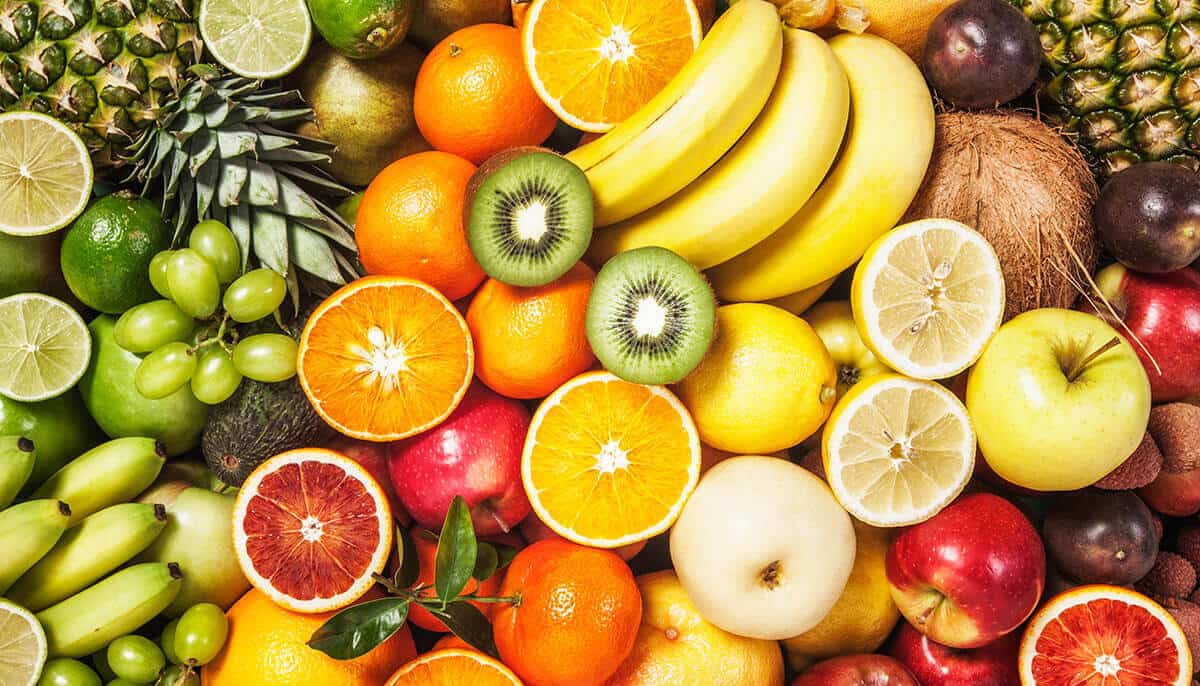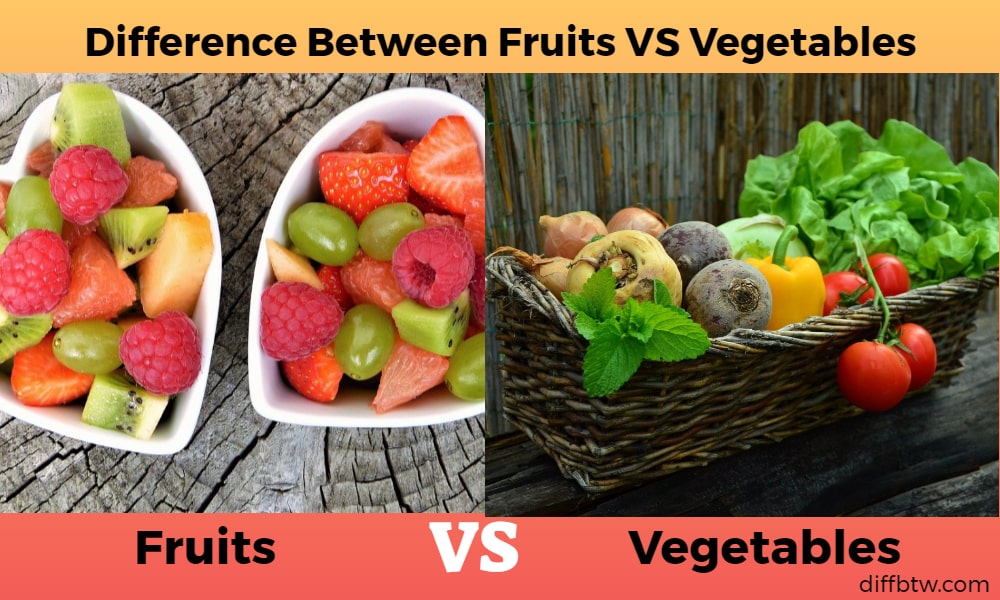It is true to say that the consumption of fruits and vegetables makes the human body healthy. For the fact, there is a presence of important nutrients like minerals and vitamins for the protection.
In this regards, most botanical scientists consider fruit an ovary which gets matured. This fleshy ovary consists of a seed that has developed after being fertilized. On the other hand, in an extensive sense, a vegetable is a type of product by the plant.
In most cases, the term vegetable refers to that portion of the plant which is edible. It can include leaves, roots, bulbs, and roots of the plant. As there occur different varieties of fruits and vegetables, therefore, there often comes some confusion.
In this write-up, we will mention the difference between fruits and vegetables for your better understanding.
What are Fruits?

Fruits are sweet and sour and have a fleshy texture with seeds. They are eaten uncooked. Fruit consumption is completely reliant on humans and animals. Corn kernels, tomatoes, almonds, bean pods, and wheat grains are among the numerous objects that are sometimes referred to as fruits yet do not have their structure.
Angiosperm is a term for edible fruits. The pericarp refers to the fruit’s outer covering. Fruits go through a maturation and fertilization phase to develop. Different mechanisms of seed dissemination, such as water, wind, humans, and animals, cause variations in fruit structures.
What are Vegetables?

Any other portion of the plant is referred to as a vegetable. Beets, potatoes, and turnips are examples of vegetables that are the roots of a plant. They can either be leaves, such as lettuce and spinach, or buds, such as broccoli or cauliflower.
Celery, for example, is a vegetable that is the stem of a plant. Other than this cucumbers, sweet corn, peppers, and tomatoes are fruits that are known as vegetables due to their usage. Legumes, which are certain beans and peas, are commonly used as seed vegetables.
Examples of Fruits and Vegetables
Although most fruit vs. vegetable confusion is due to fruits being mislabeled as vegetables. There aren’t many (if any) fruits that are mislabeled. Nevertheless, some vegetables have a sweeter flavor than others, but they are still classified as vegetables. It is for the fact that they are not occurring from flowers. Also, they do not contain seeds and do have a stem or leaves. Here’s a list of fruits that are frequently misidentified as (and prepared as) vegetables:
- Cucumber
- Zucchini
- Brinjal
- Tomato
- Squash
- Capsicum
Types of Vegetables
Vegetables are divided into three categories depending on the edible nature of their botanical parts. In addition, their placement in relation to the ground. Earth vegetables, herbage vegetables, and fruit vegetables are the three types of vegetables. The edible components of earth vegetables, such as modified roots and stems, are found underground. Aboveground Components of herbage vegetables include stems, leaves, buds, and flowers. Fruit veggies are ones in which the botanical fruits are cooked rather than eaten fresh (unless in salads).
Plants are classified as vegetables based on the edible elements of their botanical components:
Root Vegetables
Plants that produce edible underground roots, primarily modified beets and sweet potatoes. Tuberous roots or fleshy roots are modified roots.
Stem Vegetables
Plants with edible botanical stems are typically young and succulent. They are further separated into edible plants with primarily aerial stems.
Leafy Vegetables
Plants with edible leaves at different stages of development. The leaves can be separated and fully inflated or formed ahead of time, as in cabbage. Some species, such as sweet potato, have succulent stems.
Flower Vegetables
Plants that produce edible flowers as well as extra elements such as the stalk in some species. It is, however, a mature bloom in squash.
Seed Vegetables
Plants that produce edible botanical seeds, usually belonging to the Fabaceae (legumes) family, such as mung bean.
Nutritional Differences
To begin with, most vegetables contain six different types of nutrients that the human body requires. Vitamins, such as vitamin A, vitamin B, and vitamin C, are the most important nutrients in vegetables. Vegetables also include bioactive compounds such as lycopene, chlorophyll, alkaloids, polyphenols, and others. On the other side, the nutrients in different colored fruits and vegetables are diverse. For example, citrus fruits are high in vitamin C, while berries contain anti-inflammatory anthocyanins. These nutrients each have their own set of advantages that help you achieve your health goals.
Comparison Chart between Fruits and Vegetables
| FRUITS | VEGETABLES | |
| Introduction | It is the reproductive part of the flowering plant which has a seed | It classifies on the basis of the portion of plants that can consume as food. |
| Taste | Fruits have tart or sweet in flavor | Vegetables have a gentle or savory flavor |
| Nutrients | In most fruits a number of vitamins, minerals, flavonoids, and antioxidants are present. | There are also certain amounts of nutrients like carotenoids, flavonoids, and minerals present in vegetables. |
| Water Content | Comparatively the water content is high in all the fruits | It varies from one vegetable to another |
Conclusion
It is quite clear that there is a botanical distinction between fruits and vegetables. They do; however, both have a long list of nutrients and health advantages that can reduce your risk of certain diseases. The amount of salt and sugar is all low in both fruits and vegetables. They contain a lot of dietary fiber. However, it is recommended to make good consumption of fruit and vegetables. If you want to have a well-balanced, and active lifestyle.
